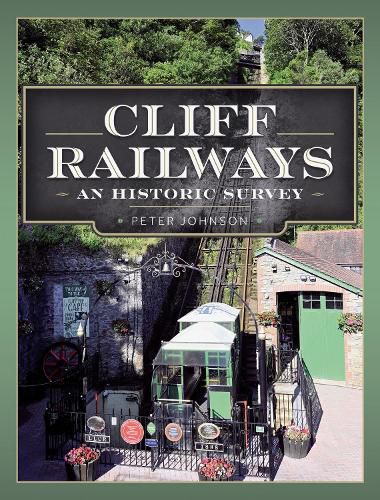Readings Newsletter
Become a Readings Member to make your shopping experience even easier.
Sign in or sign up for free!
You’re not far away from qualifying for FREE standard shipping within Australia
You’ve qualified for FREE standard shipping within Australia
The cart is loading…






In the 19th Century there was a widespread feeling in seaside resorts with cliffs that visitor numbers would be increased if there was an easy way of reaching, and more importantly, returning from the beach, avoiding flights of stairs or long zig-zag paths. To address this issue, the first cliff railway was built at Scarborough in 1875. Since then, another twenty-nine, or thirty if the Leas lift at Folkestone, which was duplicated in 1890, is counted as two, have been built, including three at inland locations. Despite having the same function, all the cliff railways are different and have their own characteristics. Some of them still use water as a power source. The remainder use electric motors. In addition to telling the story of Britain's cliff railways, author Peter Johnson tells the story of the authorised but unbuilt cliff railways, vertical lifts and electric stairways that serve or served the same function in a few places, and adds details of what might be called 'cliff railway derivatives,' steep-grade, rope-hauled, railways, airport automated people movers, and modern inclined lift installations that might have been built as cliff railways if they had been built a hundred years ago. To compile this new book, Peter Johnson, who has written books on Welsh and narrow gauge railways for Pen & Sword, has carried out extensive research in government files and old newspapers. Many of the illustrations have not been published previously and a few of them are very rare. AUTHOR: Peter Johnson is a historian specialising in North Wales's railways, particularly its many narrow gauge lines. Writing over 40 books since 1984, he brings together threads from many original sources to produce informed and readable accounts of their histories and development. A retired local government officer, he was editor of the Ffestiniog Railway Society's quarterly magazine from 1974 until 2003 and a director of the society for 11 years. In 2003 he was appointed the Festiniog Railway Company's official photographer. From 1991-2019 he also contributed a narrow-gauge railway news column to one of the national railway magazines. So far, he has written ten book for Pen & Sword Transport, with more to follow. 200 colour illustrations
$9.00 standard shipping within Australia
FREE standard shipping within Australia for orders over $100.00
Express & International shipping calculated at checkout
In the 19th Century there was a widespread feeling in seaside resorts with cliffs that visitor numbers would be increased if there was an easy way of reaching, and more importantly, returning from the beach, avoiding flights of stairs or long zig-zag paths. To address this issue, the first cliff railway was built at Scarborough in 1875. Since then, another twenty-nine, or thirty if the Leas lift at Folkestone, which was duplicated in 1890, is counted as two, have been built, including three at inland locations. Despite having the same function, all the cliff railways are different and have their own characteristics. Some of them still use water as a power source. The remainder use electric motors. In addition to telling the story of Britain's cliff railways, author Peter Johnson tells the story of the authorised but unbuilt cliff railways, vertical lifts and electric stairways that serve or served the same function in a few places, and adds details of what might be called 'cliff railway derivatives,' steep-grade, rope-hauled, railways, airport automated people movers, and modern inclined lift installations that might have been built as cliff railways if they had been built a hundred years ago. To compile this new book, Peter Johnson, who has written books on Welsh and narrow gauge railways for Pen & Sword, has carried out extensive research in government files and old newspapers. Many of the illustrations have not been published previously and a few of them are very rare. AUTHOR: Peter Johnson is a historian specialising in North Wales's railways, particularly its many narrow gauge lines. Writing over 40 books since 1984, he brings together threads from many original sources to produce informed and readable accounts of their histories and development. A retired local government officer, he was editor of the Ffestiniog Railway Society's quarterly magazine from 1974 until 2003 and a director of the society for 11 years. In 2003 he was appointed the Festiniog Railway Company's official photographer. From 1991-2019 he also contributed a narrow-gauge railway news column to one of the national railway magazines. So far, he has written ten book for Pen & Sword Transport, with more to follow. 200 colour illustrations